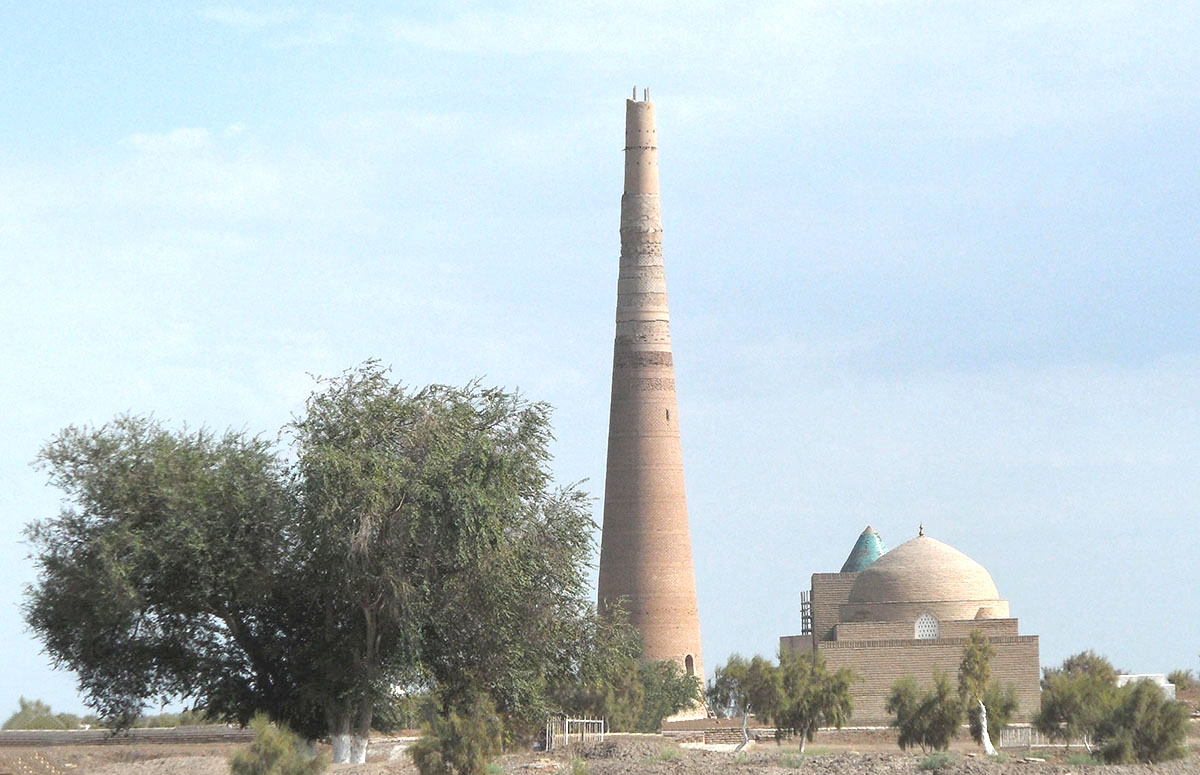Minaret Kutlug-Timur (XII-XIV centuries) – grandiose, majestic, powerful ... What epithets only do not sound about this unique structure of the Middle Ages. And indeed it is!
Reaching a height of 60 meters, the Kutlug-Timur minaret is the highest monument in Central Asia, “costing” even the Sultan Sanjar mausoleum.
 The minaret is a conical column. A slender, thinning upward round trunk is dissected by eighteen belts (stripes) painted with an ornament and three belts of inscriptions on kufi. In the past, the minaret was a wooden lantern of the Iranian type, which burned down during a fire. To the top of the minaret there is a spiral staircase of 145 steps, which could only be reached from the roof of the mosque that does not exist now.
The minaret is a conical column. A slender, thinning upward round trunk is dissected by eighteen belts (stripes) painted with an ornament and three belts of inscriptions on kufi. In the past, the minaret was a wooden lantern of the Iranian type, which burned down during a fire. To the top of the minaret there is a spiral staircase of 145 steps, which could only be reached from the roof of the mosque that does not exist now.
The Kutlug-Timur minaret is deprived of the rich decor of the Central Asian minarets of the 11th-12th centuries, but surpasses their bold designs: their height and harmony of proportions.
Scientists are still arguing about the age of the minaret. Some believe that the settlement and the construction of the minaret were made during the reign of Kutlug-Timur, by order of the ruler himself. Others that began to build it under Shah Mamun (XI century). It is also reported that it was built during the time of Sultan Mahmud Ghaznavi (998-1030). It was established only that it was he (and not the minaret of Mamun) who survived after the destruction of the city by the Mongols in 1221. But the dome of the minaret, representing a valuable example of architecture, was badly damaged and was subsequently restored.
